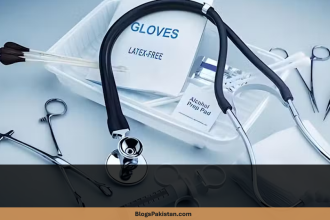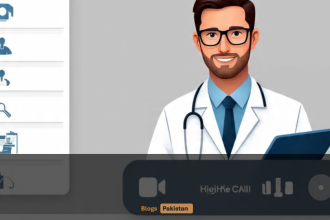In a revelation that has sent shockwaves across Pakistan, the Anti-Narcotics Force (ANF) has disclosed that 17 million university students—nearly the population of the Netherlands—are grappling with drug addiction. This alarming statistic, presented to the Senate’s Functional Committee on Human Rights, paints a grim picture of a crisis threatening the nation’s future. As authorities scramble for solutions, questions loom: How did this happen? And can Pakistan’s youth still be saved?
The Shocking Scale of Pakistan’s Drug Epidemic
The ANF’s report, shared during a high-profile Senate session chaired by Senator Samina Mumtaz Zehri, reveals that one in three young Pakistanis aged 18–31 is battling substance abuse. Universities, once seen as hubs of learning and growth, have become hotbeds for narcotics trafficking.
Key Findings from the ANF Report:
- 31 drug dealers arrested during campus raids.
- 140 kg of illegal substances seized, including heroin, cannabis, and synthetic drugs.
- 237 universities targeted in a nationwide crackdown since February 2024.
Yet, these numbers only scratch the surface. With limited rehab centers and societal stigma preventing many from seeking help, the true toll of addiction remains hidden.
Why Are Students Turning to Drugs?
While the ANF’s crackdown has exposed trafficking networks, critics argue that root causes remain unaddressed. Senator Zehri slammed the lack of “scientific data” to explain why students are increasingly drawn to narcotics. Potential factors include:
- Mental Health Struggles: Rising academic pressure and unemployment rates.
- Easy Access: Vapes and prescription pills sold unchecked near campuses.
- Cultural Shifts: Decline in recreational activities and community support systems.
“Drugs are a symptom of deeper societal fractures,” warned Ayesha Raza Farooq, Chairperson of the National Commission on the Rights of the Child (NCRC).
Government Response: Progress or PR?
Following Prime Minister Shahbaz Sharif’s directives, the ANF launched its “Drug-Free Pakistan” campaign earlier this year. But critics question its effectiveness.
What’s Been Done So Far?
- Awareness Drives: Workshops in 432 Islamabad schools, featuring anti-drug curricula.
- Tech Partnerships: Mental health apps like Taskeen and Umre Rawan offering counseling.
- Police Collaboration: The “Friends of Police” initiative enlisting businesses to mentor at-risk youth.
Despite these efforts, Senator Zehri noted a glaring absence of media campaigns to educate the public. “If we don’t change perceptions, we’re fighting a losing battle,” she argued.
The Vape Dilemma: A Gateway to Harder Drugs?
Among the most contentious issues raised was the unregulated sale of vapes in Islamabad. While marketed as “harmless,” these devices often contain nicotine or THC-laced oils, creating a pipeline to harder substances.
“We’re seeing 12-year-olds addicted to vaping,” revealed an FDE representative. “Without strict regulations, this crisis will spiral.”
Grassroots Solutions: Schools, Parents, and Hope
Experts agree: Combating drug addiction requires a community-driven approach.
1. School-Level Interventions
The Federal Directorate of Education (FDE) has rolled out:
- Random Drug Testing: Mandatory screenings in public institutions.
- Counseling Programs: Psychologists stationed in schools.
- Parent-Teacher Task Forces: Workshops to spot early signs of addiction.
2. Rebuilding Recreational Spaces
With parks and sports facilities decaying, the NCRC urges investments in youth engagement. “Idle minds are vulnerable minds,” stressed Farooq.
3. Learning from Punjab’s Success
UNICEF’s Sharmeela Rassool highlighted a Punjab-based nutrition initiative that reduced school dropout rates. Similar models could be adapted for drug prevention.
The Road Ahead: Data, Accountability, and Global Support
The Senate committee has demanded:
- A comparative analysis of past anti-drug campaigns.
- Stricter penalties for vendors selling vapes to minors.
- Monthly progress reports from the ANF and FDE.
Meanwhile, international allies like UNICEF are pledging support. “Child welfare is global security,” Rassool asserted.
Can Pakistan Turn the Tide?
The stakes couldn’t be higher. With 64% of Pakistan’s population under 30, the nation’s demographic dividend hangs in the balance. While the ANF’s arrests and seizures are commendable, sustainable change requires:
- Transparent Data Collection: To tailor evidence-based policies.
- Media Mobilization: National campaigns to destigmatize addiction.
- Private Sector Involvement: Corporations funding rehab centers.
As Senator Zehri concluded: “This isn’t just a crisis—it’s a battle for Pakistan’s soul.”
Visual Aids to Enhance Understanding:
- Infographic: “Pakistan’s Drug Crisis by the Numbers” (17 million students, 140 kg seized, etc.).
- Map: Highlighting provinces with the highest addiction rates.
- Photo Series: Students participating in anti-drug workshops.
- Timeline: Key milestones in the ANF’s 2024 campaign.
Pakistan stands at a crossroads. Will it watch a generation succumb to addiction—or rise as a global example of resilience? The answer lies in unity, urgency, and unflinching resolve.










